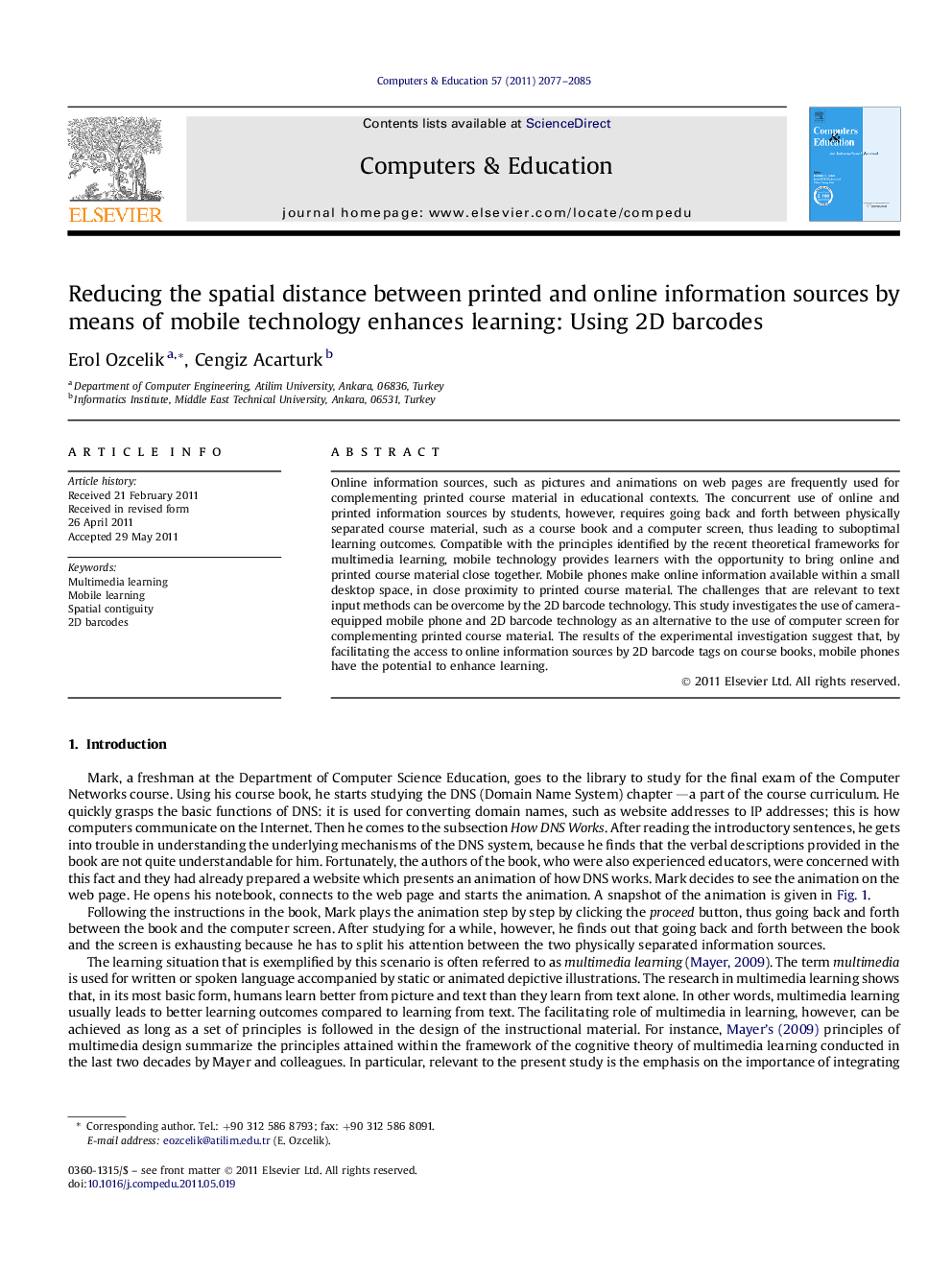| Article ID | Journal | Published Year | Pages | File Type |
|---|---|---|---|---|
| 348791 | Computers & Education | 2011 | 9 Pages |
Online information sources, such as pictures and animations on web pages are frequently used for complementing printed course material in educational contexts. The concurrent use of online and printed information sources by students, however, requires going back and forth between physically separated course material, such as a course book and a computer screen, thus leading to suboptimal learning outcomes. Compatible with the principles identified by the recent theoretical frameworks for multimedia learning, mobile technology provides learners with the opportunity to bring online and printed course material close together. Mobile phones make online information available within a small desktop space, in close proximity to printed course material. The challenges that are relevant to text input methods can be overcome by the 2D barcode technology. This study investigates the use of camera-equipped mobile phone and 2D barcode technology as an alternative to the use of computer screen for complementing printed course material. The results of the experimental investigation suggest that, by facilitating the access to online information sources by 2D barcode tags on course books, mobile phones have the potential to enhance learning.
► We examine the role of spatial distance between online and printed learning materials. ► Mobile phone and 2D barcodes help reducing the distance between learning materials. ► Decreasing spatial distance between online and printed materials enhances retention.
